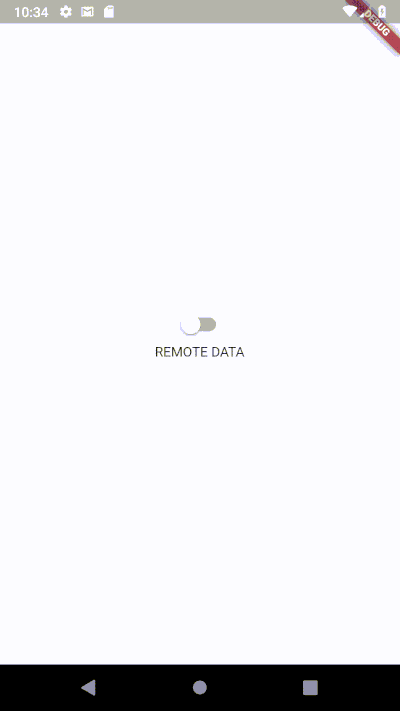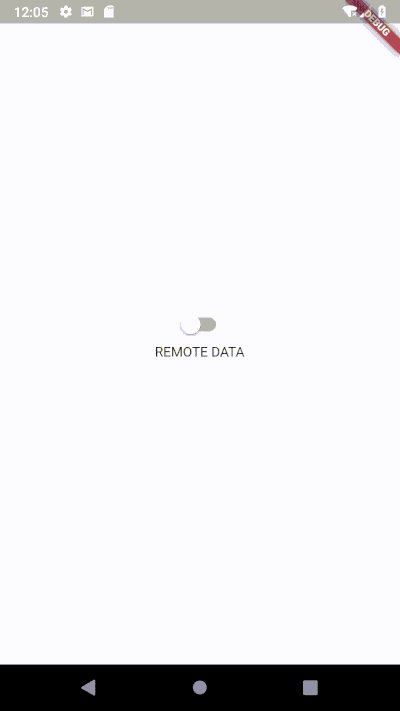textfield reload issue and other things reload problem.===================================
https://github.com/flutter/flutter/issues/18828
https://blog.csdn.net/u011272795/article/details/83010974 <<<<<<<===============
https://medium.com/saugo360/flutter-my-futurebuilder-keeps-firing-6e774830bc2
Flutter: My FutureBuilder Keeps Firing!

If you’ve ever done any serious Flutter development, then you have definitely faced the problem in the title above. But don’t worry, You’re not alone!
What is the problem?
The FutureBuilder widget that Flutter provides us to create widgets based on the state of some future, keeps re-firing that future every time a rebuild happens! The problem is best manifested with this simple example:
void main() => runApp(MyApp());
class MyApp extends StatelessWidget {
@override
Widget build(BuildContext context) {
return MaterialApp(
home: HomeScreen()
);
}
}
class HomeScreen extends StatefulWidget {
@override
_HomeScreenState createState() => _HomeScreenState();
}
class _HomeScreenState extends State<HomeScreen> {
bool _switchValue;
@override
void initState() {
super.initState();
this._switchValue = false;
}
@override
Widget build(BuildContext context) {
return Scaffold(
body: Column(
mainAxisAlignment: MainAxisAlignment.center,
children: <Widget>[
Switch(
value: this._switchValue,
onChanged: (newValue) {
setState(() {
this._switchValue = newValue;
});
},
),
FutureBuilder(
future: this._fetchData(),
builder: (context, snapshot) {
switch (snapshot.connectionState) {
case ConnectionState.none:
case ConnectionState.waiting:
return Center(
child: CircularProgressIndicator()
);
default:
return Center(
child: Text(snapshot.data)
);
}
}
),
],
),
);
}
_fetchData() async {
await Future.delayed(Duration(seconds: 2));
return 'REMOTE DATA';
}
}
- Our app displays a
HomeScreenon which we have oneSwitchwidget and oneFutureBuilderthat loads remote data and displays it on the screen. - The
FutureBuildersubscribes to the future returned from the function_fetchData. This function simulates a server that returns its result after two seconds. - When the user taps the switch, we update the member
_switchValue, which is then fed into the switch itself, to change its actual value.
If you run this app, the following happens:

Flipping the switch affects the state of the FutureBuilder
Even though the switch and the FutureBuilder are not related in any form, every time we change the switch value (by calling setState), the FutureBuilder goes through its whole life-cycle again! It re-fetches the future, causing unneeded traffic, and shows the loading again, causing bad user experience.
This problem manifests itself in a variety of ways. In some cases it’s not even as obvious as the example above. For example:
- Network traffic being generated from pages that are not currently on screen
- Hot reloading not working properly
- Losing the Navigator state when updating values in some Inherited Widgets
- etc…
But what is the cause of all of this? And how can we solve it?
The didUpdateWidget problem
Note: In this section I will take a closer look at how FutureBuilder works. If you’re not interested in this, you can skip to the solution.
If we take a closer look at the code of FutureBuilder, we find that it is a StatefulWidget. As we know, StatefulWidgets maintain a long-livedStateobject. This state has a few methods that manage its life-cycle, like initState, build, and didUpdateWidget. initState is called only once when the state object is first created, and build is called every time we need to build the widget to display, but what what about didUpdateWidget? This method is called whenever the widget attached to this State object changes. When the widget is rebuilt with new inputs, the old widget is disposed, and a new widget is created and assigned to the State object, and didUpdateWidget is called to do anything we want to do before the rebuild. In case of FutureBuilder, this method looks like this:
@override
void didUpdateWidget(FutureBuilder<T> oldWidget) {
super.didUpdateWidget(oldWidget);
if (oldWidget.future != widget.future) {
if (_activeCallbackIdentity != null) {
_unsubscribe();
_snapshot = _snapshot.inState(ConnectionState.none);
}
_subscribe();
}
}
It’s basically saying: if, when rebuilt, the new widget has a different Future instance than the old one, then repeat everything: unsubscribe, and subscribe again.
Well, that’s the key! If we provide it with the same future, then it will not refire!
But aren’t we providing the same future? we’re calling the same function! well, it’s not the same future instance. Our function is doing exactly the same work, but then returning a new future, different from the old one.
So, what we want to do is to store or cache the output of the function the first time it is called, and then provide this same output whenever the function is called again. This process is known as memoization.
Solution: Memoize the future
Memoization is, in simple terms, caching the return value of a function, and reusing it when that function is called again. Memoization is mostly used in functional languages, where functions are deterministic (they always return the same output for the same inputs), but we can use simple memoization for our problem here, to make sure the FutureBuilder always receives the same future instance.
To do that, we will use Dart’s AsyncMemoizer. This memoizer does exactly what we want! It takes an asynchronous function, calls it the first time it is called, and caches its result. For all subsequent calls to the function, the memoizer returns the same previously calculated future.
Thus, to solve our problem, we start by creating an instance of AsyncMemoizerin our widget:
final AsyncMemoizer _memoizer = AsyncMemoizer();
Note: you shouldn’t instantiate the memoizer inside a StatelessWidget, because Flutter disposes of StatelessWidgets at every rebuild, which basically beats the purpose. You should instantiate it either in a StatefulWidget, or somewhere where it can persist.
Afterwards, we will modify our _fetchData function to use that memoizer:
_fetchData() {
return this._memoizer.runOnce(() async {
await Future.delayed(Duration(seconds: 2));
return 'REMOTE DATA';
});
}
- We wrapped our function with
AsyncMemoizer.runOncewhich does exactly what it sounds like; it runs the function only once, and when called again, returns the cached future.
And that’s it! Our FutureBuilder now only fires the first time around:

Thus, our FutureBuilder was getting confused, and thinking that a new future was passed to it, causing it to refire every time. To solve this, we used Dart’s AsyncMemoizer to pass the same future instance every time.
I hope this has been helpful! Let me know what you think!
textfield reload issue and other things reload problem.===================================的更多相关文章
- eclipse 打开是报错"reload maven project has encountered a problem"
不需要删除整个 .metadata 如果删除这个代价是重新导入全部项目 D:\eclipse-workspace\.metadata\.plugins\org.eclipse.e4.workbench ...
- 在IE浏览器中执行OpenFlashChart的reload方法时无法刷新的解决方法
由于项目需求,需要在网页上利用图表展示相关数据的统计信息,采用了OpenFlashChart技术.OpenFlashChart是一款开源的以Flash和Javascript为技术基础的免费图表,用它能 ...
- javascript 中的location.reload
location.reload()是什么意思 location.reload() 括号内有一个参数 true/false , 为空和false的效果一样. 如果该方法没有规定参数,或者参数是 fals ...
- 把Nginx加入系统服务 service nginx (start | stop | restart | reload)
vim /etc/init.d/nginx 1 #!/bin/bash 2 # nginx Startup script for the Nginx HTTP Server 3 # it is v ...
- 使用Tomcat的Reload提高开发速度(翻译)
欢迎转载http://www.cnblogs.com/coodream2009,有翻译的不太准确的地方请大家指出,我继续修改完善. 按照Java Servlet规范第四部分推荐的,Tomcat系统的实 ...
- layui table数据表格reload where参数保留问题
layui table数据表格reload where参数保留问题 在使用layui过程中多多少少会遇到些问题 table reload 有个坑:reload时where参数会保留上次的参数,如果用 ...
- javascript:location.reload()和location.replace()的区别,及对图片缓存的影响。
有段时间没有清理IE的临时文件(缓存文件),在我清理的时候,我突然发现一个问题. 我打开的一个网站,图片默认缓存一个月的,但我发现,当我上传图片或删除图片之后,图片重新缓存,也就意味着,在我上传新图片 ...
- Python中的reload函数
Python中的import语句可以导入module文件,但是import语句只是第一次导入的时候会执行module文件中的代码,然后就会把导入的模块文件存入到内存,当再次导入的时候,Python是直 ...
- python之reload用法
一.python2和python3的区别 python2中可以直接使用reload().python3中需要从库中导入,有两种方法: >>> from imp import relo ...
随机推荐
- 小甲鱼零基础python课后题 P21 020函数:内嵌函数和闭包函数
测试题 0.如果希望在函数中修改全局变量的值,应该使用什么关键字? 答:globe 1.在嵌套函数中,如果希望在内部函数修改外部函数的局部变量,应该使用什么关键字? 答:nonlocal 2.pyth ...
- 使用ElasticSearch全文检索以及集群部署
ElasticSearch 即 ES 安装:版本---elasticsearch-2.4.6.tar.gz tar -zxvf elasticsearch-2.4.6.tar.gz 由于es不允许使 ...
- webapi 利用webapiHelp和swagger生成接口文档
webapi 利用webapiHelp和swagger生成接口文档.均依赖xml(需允许项目生成注释xml) webapiHelp:微软技术自带,仅含有模块.方法.请求-相应参数的注释. swagge ...
- Android的Service的创建与使用
Service介绍 Service是Android四大组件中与Activity最为相似的组件,它们都代表可执行的程序,区别是:Service一直在后台运行,没有用户界面.使用service要向Acti ...
- VUE组件间数据方法的传递,初步了解
父组件的数据传递到子组件: 子组件:(其中fMsg是要从父组件传递过来的数据,注意fMsg要在子组件props里先定义) 父组件:(使用v-bind,将自身数据绑定给中转属性fMsg,从而通过 子组件 ...
- 20164320 王浩 Exp1 PC平台逆向破解
一.逆向及Bof基础实践说明 1.1实践目标 本次实践的对象是一个名为pwn1的linux可执行文件. 该程序正常执行流程是:main调用foo函数,foo函数会简单回显任何用户输入的字符串. 手工修 ...
- [vue开发记录]float label输入框
上图: 组件代码: <!-- Created by Locke Ou on 2018/6/20. --> <template> <div> <div clas ...
- es6下 vue实例属性template不能使用
esm模式下 不能使用template,需要引入非esm的vue.js,查看vue源码的包的dist目录下 文件标有esm是支持ems,没有标记,就是不支持(这个知识,怎么说了,应该属于webpack ...
- abap test seam 和 TEST-INJECTION
TEST-SEAM 和 TEST-INJECTION 一块儿使用 可以模拟出调用方法的return,exporting,chaning值. 例如: 1: 假设有一个类zcl_demo_input,该 ...
- 使用LVM进行分区扩展的记录
场景:在磁盘分区空间不够的情况下,要扩展分区空间 因为使用的是虚拟机,所以可以对原有的硬盘上进行扩展,而不需要新增一个硬盘 1.扩展磁盘并使用fdisk工具进行分区 虚拟机关机后对磁盘进行扩展,扩展到 ...
